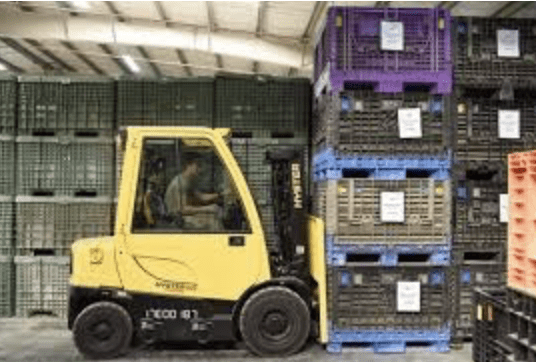Aftermarket parts are gaining popularity in the automotive industry. Not only are they affordable and readily available for all models and makes, but they are also catching on with their OEM counterparts in terms of quality.
Buying an aftermarket radiator or suspensions for your car is fine, but forklifts are designed differently. They are intended for heavy-duty industrial and warehousing applications. Can you trust aftermarket parts for your forklift?
Yes and No.
First of all, let’s find out why forklift aftermarket parts shouldn’t be your first preference.
Your warehousing operations largely depend on your forklift’s performance. If your forklift isn’t driving smoothly or is breaking down frequently, not only will it cause business downtime, but you will also be hard-pressed to get rid of it and buy a new one. And as you already know, forklifts are expensive.
How does that relate to using aftermarket parts?
Aftermarket parts can be loosely defined as rip-offs of their OEM counterparts. They are cheap at first, but often cost more in the long run.
Aftermarket parts are not designed to the best quality standards as OEMs. Not only do they wear out faster, but they also impact the life cycle of the equipment. You may have to replace the part more frequently, which sometimes cost you more than buying OEM.
However, there are a few manufacturers that provide quality aftermarket forklift parts at a competitive price, along with a long-term warranty for your peace of mind. But like I said, these are quite a few and far between.
Secondly, aftermarket parts can void the manufacturer’s warranty unless you are buying replacement parts. A replacement part is designed to exact specifications as an OEM part and fits perfectly. However, not all manufacturers subscribe to this notion and might null your warranty if you are using an aftermarket part.
Overwhelming variety
You thought it’s good to have options. Well, not so much because a majority of aftermarket part manufacturers compete on price. In a bid to attract more and more customers, they tend to lower their prices by cutting corners.
Also, when there’s an overwhelming variety to sift through, it’s hard for you to make a decision. And chances are you will end up buying the wrong ones unless you know about the credible sources of aftermarket forklift parts.
Now let’s look at the flip side—the pros of buying aftermarket parts.
The number one reason why forklift owners buy aftermarket parts is the price. If the forklift breaks down or damages a body panel, buying an aftermarket substitute is the cheapest way to fix the problem and get going with your operations.
Now, the same aftermarket part could be available at various price points. The cheapest isn’t always the best bet and won’t solve the problem; rather, the problem might get worse.
The number two reason is availability. While you may have to wait for your OEM part to arrive from a different part of the world, aftermarket parts can be purchased from a local parts store or an online supplier that delivers in your area. This will minimize downtime.
Bonus tip
If you are highly concerned about the performance of your forklift, you can buy the following aftermarket parts that won’t interfere with the core performance of the equipment.
Seat Belt
Its job is to simply pin you to the seat and keep you safe in case of a collision. You don’t necessarily need an OEM seat belt to ensure your safety behind the wheel.
Lights
Aftermarket LED lights can sometimes outshine their OEM equivalents and that too at a lower price — a safe investment that lasts long.







